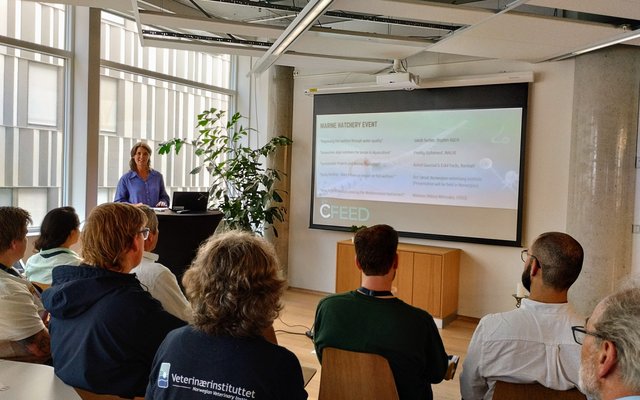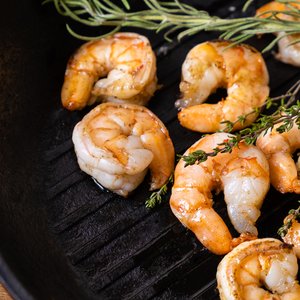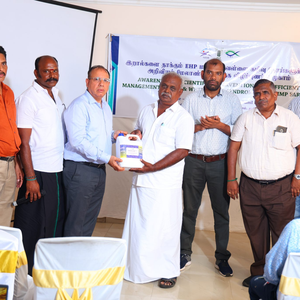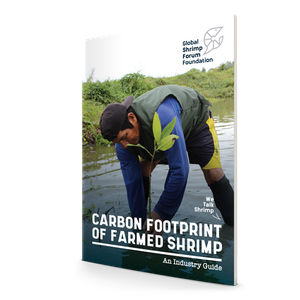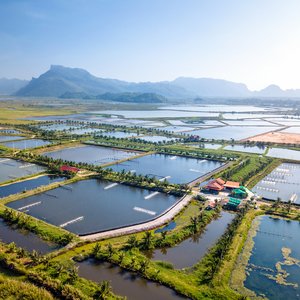CFEED organized its first Marine Hatchery Event on August 23 during Aqua Nor at its headquarters in Trondheim. Hatchery industry professionals from different countries, such as Norway, Greece, France and Spain, gathered together sharing insights in one of the few events focused on hatcheries during Aqua Nor week. Hatchery Feed & Management was partner of this event.
Five presentations were delivered during the event that discussed different technical hatchery topics.
Improving fish welfare through water quality
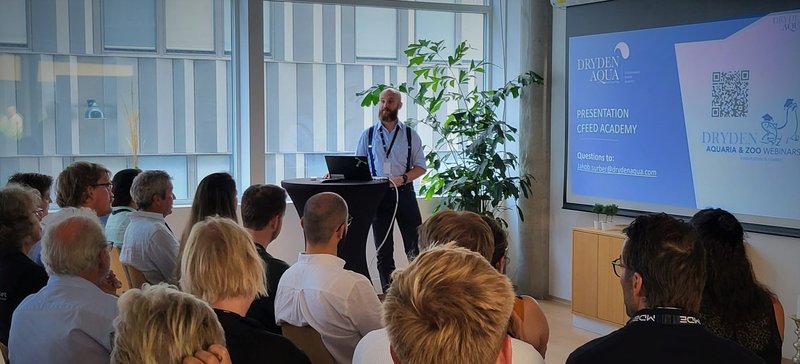
Jakob Surber, technical specialist at Dryden Aqua
Jakob Surber, technical specialist at Dryden Aqua, discussed how to improve fish welfare through water quality. Dryden Aqua manufactures mechanical filter media by up-cycling post-consumer green and brown glass bottles. This glass is activated through a unique three-step process that increases the glass surface area and improves filtration properties. Surber highlighted the effects of low water quality on an aquaculture farm and how mechanical filtration is key not only for fish performance but also for farm operation, especially in RAS and hatcheries.
Innovative algal solution
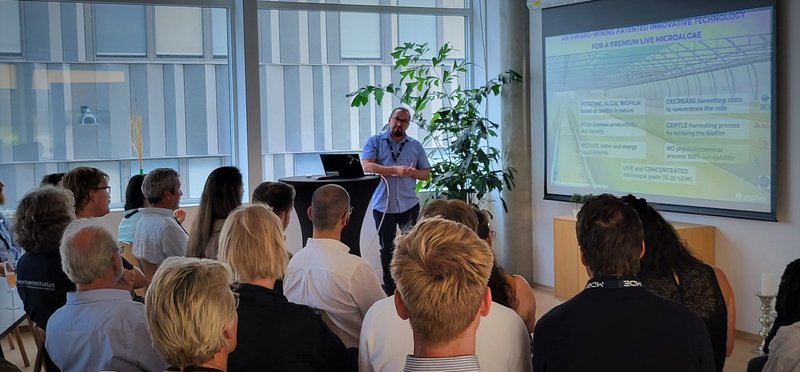
Freddy Depanthou, R&D researcher at inalve
Freddy Depanthou, R&D researcher at inalve, introduced an innovative algal solution for aquaculture hatcheries. The company has developed a patented microalgal production system that grows microalgae in a rotating biofilm. The system reduces waste, energy consumption and harvesting costs to obtain a live, concentrated microalgae paste. Depanthou presented some trial results on its concentrated Tetraselmis suecia paste. The company found an improved rotifer and copepod nutritional composition when fed on inalve’s paste. These rotifers improved zebrafish spawning performance when compared with rotifers fed on frozen microalgae. The company also found improved results in shrimp larval performance and in green water compared with frozen microalgae.
Sustainable hatchery projects
Astrid Gaustad and Eskil Forås from engineering and consultancy company, Ramboll, discussed how to increase the sustainability of aquaculture projects. In the past ten years, hatcheries have changed from small facilities to large projects and highlighted the importance of making projects sustainable from the beginning, including the facility construction. As an example, it was stated that with good engineering practices, CO2 derived from the building can be reduced by 20%. Energy usage was also highlighted as key. Building new facilities close to energy sources, heat recovery and alternative energy sources were some of the ideas discussed to increase the sustainability of hatcheries.
The importance of early feeding
Britt Tørud, veterinarian from the Norwegian Veterinary Institute, discussed the importance of early feeding in the hatchery and how its effects extend in life for species such as salmon, cod, lumpfish and halibut. Tørud has witnessed the development of the salmon industry since its early days and presented examples of how the industry can learn from the failures and successes that this industry has had on fish welfare and early feeding.
Copepods in Mediterranean hatcheries
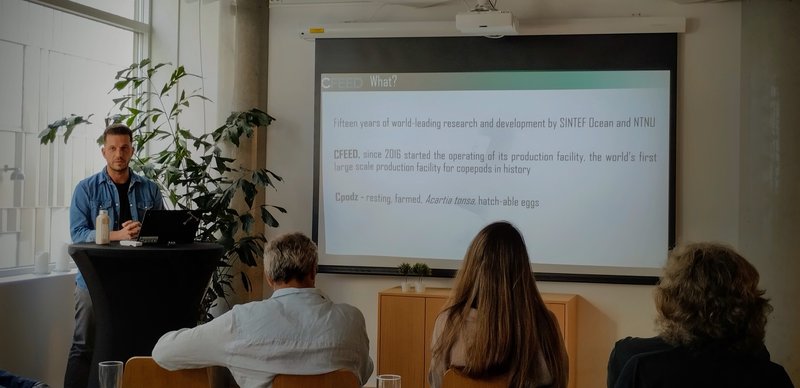
Nikos Mitrizakis, customer services representative from CFEED
Finally, Nikos Mitrizakis, customer services representative from CFEED, presented the company’s new trial results on the performance of gilthead seabream (Sparus aurata) fed on copepods in the early stages and its impact throughout the production cycle.
CFEED has developed a nutritionally complete live feed solution, C-podz, based on resting, farmed Acartia tonsa hatchable eggs. CFEED’s copepods can be incorporated into the hatchery protocol following different strategies according to each hatchery's needs: a complete substitution of rotifer, boosting larval rearing incorporating them during the first larval days, or supplementing rotifer feeding days adding both at the same time.
For the seabream trial, the company tested different copepod feeding regimes against an only-rotifer diet. Results showed that using C-podz as a starter feed had a significantly positive effect on seabream larval performance. FCR was better for all copepod treatments and skeletal deformities were higher in feeding regimes only with rotifers. The company also assessed the effects on grow-out stages and found improved FCR in sea cages.
For all the strategies, co-feeding with rotifers had the best results on larval rearing together with a positive impact on sea cage results, therefore, having an impact on the whole production performance and therefore, on its profitability.
This was the first event in a series that CFEED plans to organize to support aquaculture hatcheries and share the latest insights into hatchery topics.


